
| Sugarcane Looper (one synonym : Chalciope lycopodia Geyer, 1837) EREBINAE, EREBIDAE, NOCTUOIDEA | (donherbisonevans@yahoo.com) and Stella Crossley |
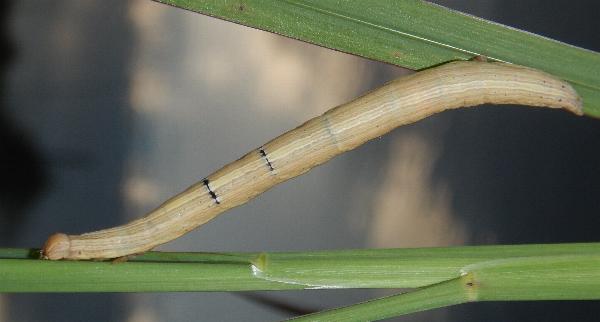
(Photo: courtesy of Donna Tomkinson,
Cooroy, Queensland)

| Sugarcane Looper (one synonym : Chalciope lycopodia Geyer, 1837) EREBINAE, EREBIDAE, NOCTUOIDEA | (donherbisonevans@yahoo.com) and Stella Crossley |

(Photo: courtesy of Donna Tomkinson,
Cooroy, Queensland)
These Caterpillars are initially pale green, becoming brown in later instars, with vague stripes along the body, and with narrow black bands between the segments.
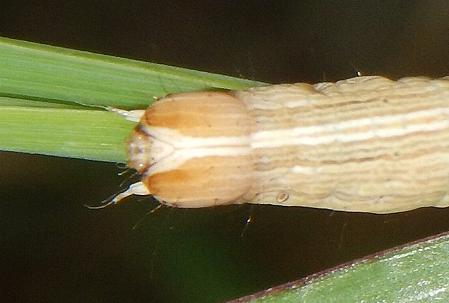
The caterpillars are missing two pairs of prolegs, and so they move in a looper fashion.
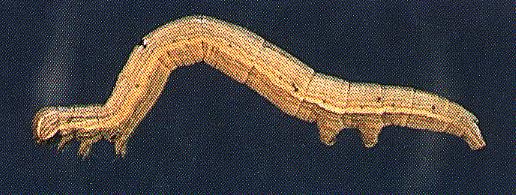
The caterpillars feed on plants in the family POACEAE, including
and are an agricultural pest on:
The caterpillars have also been found on plants in other families including
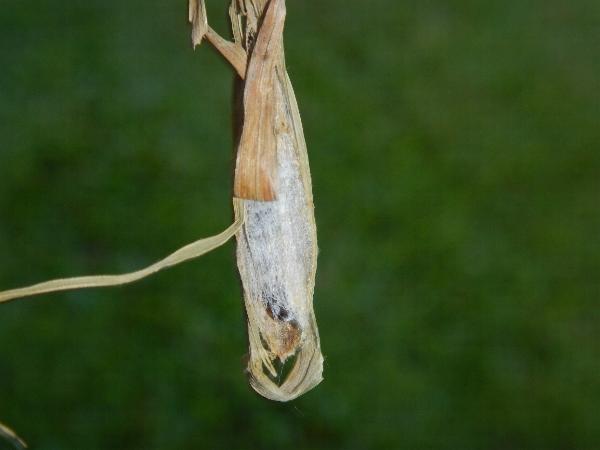
The caterpillars pupate in a sparse white cocoon in a twisted leaf or in the leaf litter.
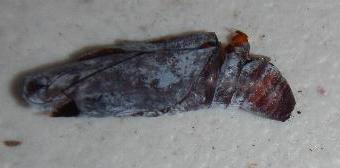
The pupa is brown with a length of about 2 cms.
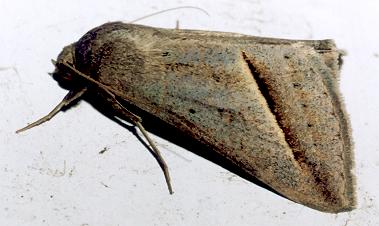
The adult moth is brown with a variable markings including a diagonal dark line with a pale edge across each wing, and a small black dot near the base on the hind margin of each forewing. The wingspan is about 4 cms.
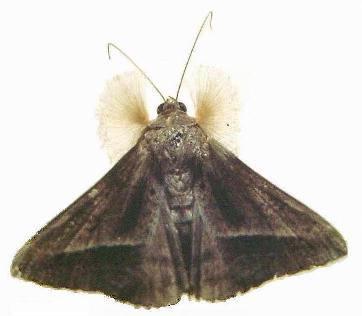
The adult females appear to have hairy fans beside the head which can be opened. These fans probably disperse pheromones to attract males.
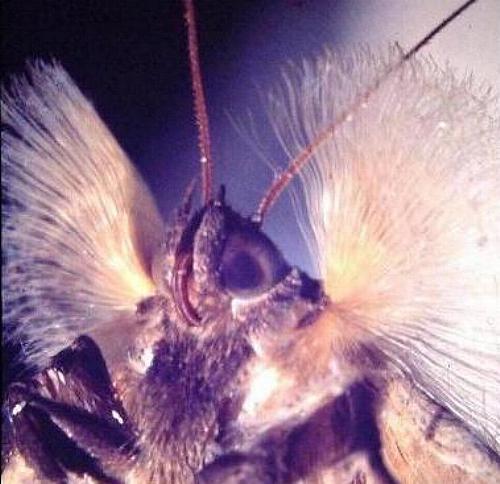
The adult moths have a coiled haustellum under the head, which they can uncoil, and with which they can pierce fruit to suck the juice, and sip nectar from flowers.
The species is found across Asia and the Pacific, including :
as well as in Australia in
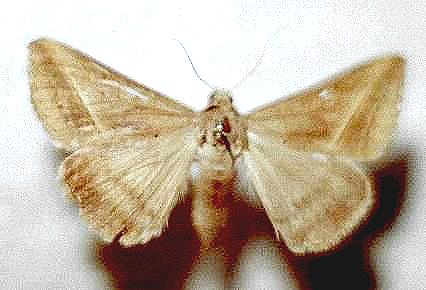
The eggs are spherical with ribs, and are green with purple markings.
A similar species, Mocis proverai that has been confused with Mocis frugalis, is found in the Middle East and Africa. It differs mainly in the genitalia.
Further reading :
J.R. Agnew (ed.),
Australian Sugarcane Pests,
Bureau of the Sugar Experiment Stations (Indooroopilly)
1997, pp. 54-55.
Ian F.B. Common,
Moths of Australia,
Melbourne University Press, 1990, pp. 65, 452.
Johan Christian Fabricius,
VI Glossata, Noctua,
Systema Entomologiae,
Flensburgi et Lipsiae : Kortii xxxii, p. 601, No. 45.
Buck Richardson,
Mothology,
LeapFrogOz, Kuranda, 2008, pp. 5, 25.
Buck Richardson,
Tropical Queensland Wildlife from Dusk to Dawn Science and Art,
LeapFrogOz, Kuranda, 2015, p. 144.
 caterpillar |  butterflies |  Lepidoptera |  moths |  caterpillar |
(updated 21 September 2008, 20 November 2024)